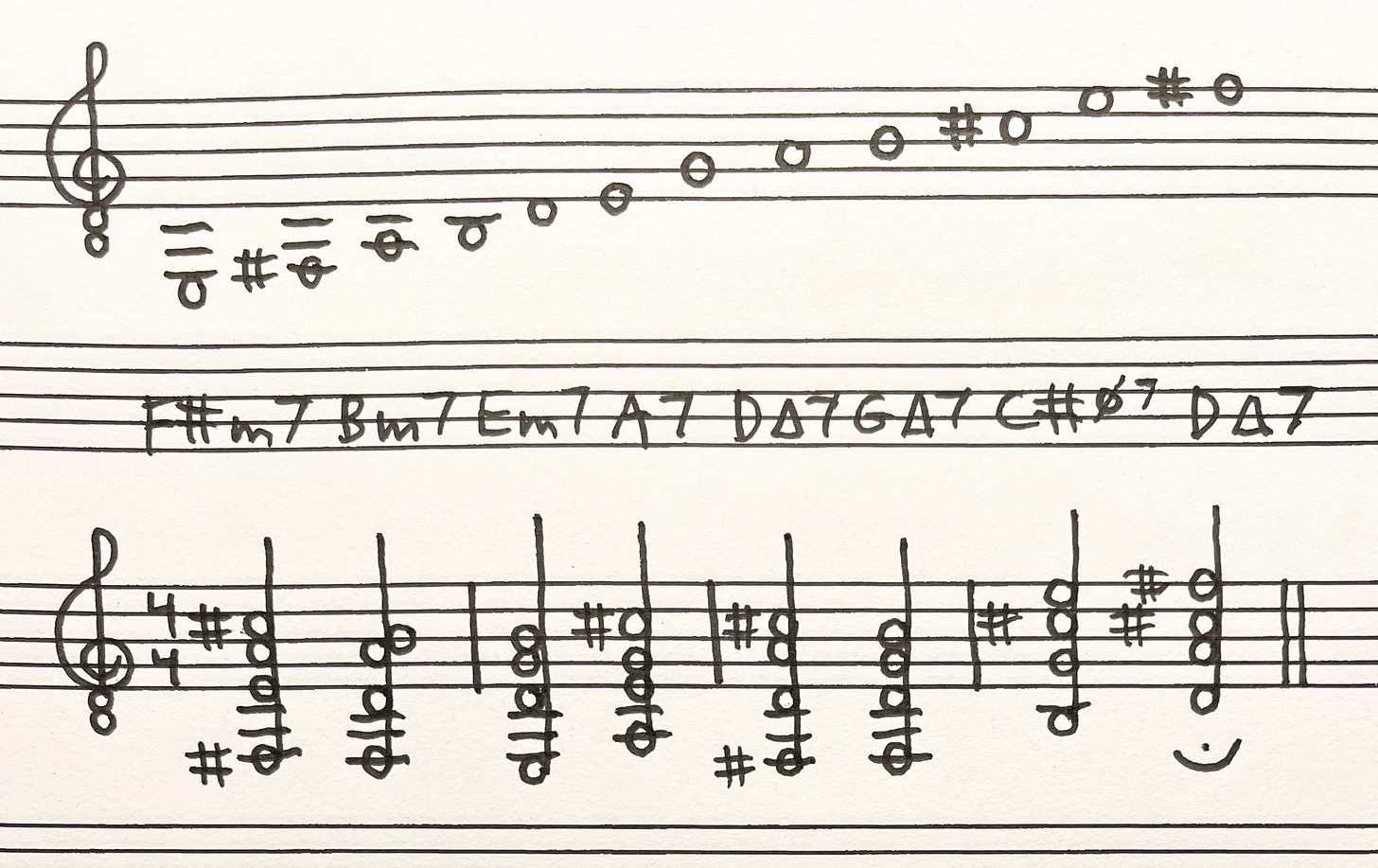CW34
I referred briefly to my book Nonmusical Patterns and their Musical Uses (for Guitar in Standard Tuning) at the beginning of CW14, but today we’ll actually look at a “Pattern” from the book. We’ll call the Nonmusical Patterns “NmPs” for short, so this, the one the book begins with, is NmP 1:
I thought of the idea in 2005, finished the book in 2007 (a year before I moved to Vermont), and it was published in a small run by a friend’s press, Radical Readout, in 2010.
Each NmP—there are a hundred in the book—does two things at once. First, it draws something on the grid of the fretboard—a (nonrepresentational) visual pattern you don’t have to know anything about music or guitar to see. As the introduction states, “Some are simple symmetry and some are more playful.” You’ll get a wider feel for them as we continue to explore them in this newsletter.
The second quality each NmP has is the business end. If I was just drawing things on the fretboard, I could throw the book together in two hours; it wouldn’t have taken two years. These drawings all produce, coincidentally, conventional pitch collections, just distributed oddly.
Look at NmP 1 again. Obviously, visually, it’s a plain symmetrical “box.” But what makes it an NmP is that this visually-coherent thing happens to produce, when you get in there and look at the notes, a complete major scale. It is fully intelligible in two different lights. Two criteria, neither automatically fulfilling the other, are satisfied.
I wasn’t a solfège person yet in 2010, so the way the “composite scale,” major in this case, is scattered is, along the bottom (see above again), notated using the number system.
Let’s start NmP 1 on the fifth fret, so that we get a G major scale.
A cool exercise is to unscramble the scale. (Playing all like pitch classes simultaneously.)
Now reverse it, “descend” the scale, without the chart. (Always take an opportunity to think notes on the fretboard. 💕)
I know this is obvious, but it was only very recently that it really occurred to me, randomly thinking of this NmP, that you can access an entire major scale using just two frets.
I started playing around with triads. Because of the doubled (and tripled) pitch classes, there are lots of options. Here’s just one way of playing through the naturally-occurring triads in G. (I will note, as I have before: if you don’t play guitar, this stuff sounds just as good on keyboard. 💕)
If you transpose down until the bottom side of the box becomes open strings, you can access the goods of a complete D major scale with just the open strings and the second fret.
Here’s a chord progression (not just ascending through in order this time) using naturally-occurring seventh chords in D.
See you next time. 💕






